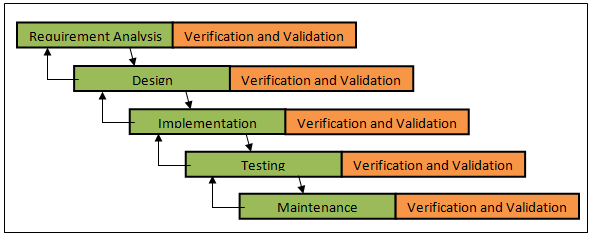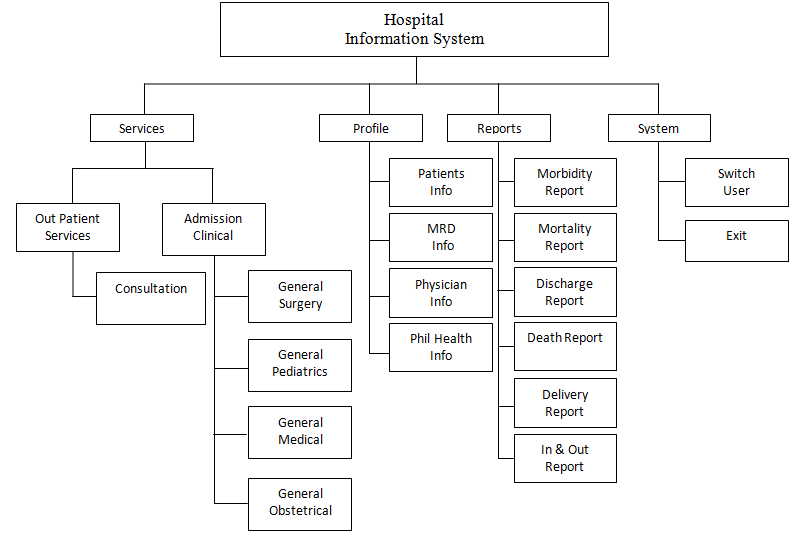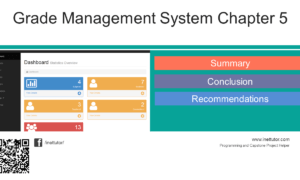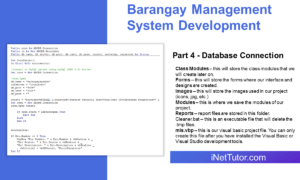Hospital Information System Methodology
CHAPTER IV
METHODOLOGY
Software Designing and Development
In this section, the software life cycle model used discussed and how the researcher came up and decided what model to develop.
The different phases that the development undergone are also be presented.
Software Life Cycle Model
The Software development model used which is the modified waterfall model that includes many stages such as Requirements analysis, System and Software Design, Implementation and Unit Testing, Integration and System Testing and Operation, and Maintenance was used.

Figure 1. Modified Waterfall Approach of Hospital Information System
The traditional Waterfall Method was first considered. But then Prototype Model was also considered since the system is actually based on the response of the user. Each developer worked on different specific part of the program, one was doing the layout of the forms, one was doing the layout of the reports, one was doing the database and one was doing the codes. There was also a constant communication with the user thus they were able to test and be able to improve and modify the software as it was created. But since it was initially started with the traditional Waterfall method from planning to analysis, and additional requirements was also set by the client as the system develop, the Modified Waterfall Method was decided.
Design Phase
This was the phase where series of designs were created, revised, and finalize, from the simple fonts, buttons, forms, and interfaces. But most importantly, this was the actual system flow was designed, from the Decomposition, Data Flow Diagram and the Entity Relationship Diagram.

Coding
In this phase, the coding was started based from the flow of the system. The program was created to meet the client’s requirements. System functions needed were ensured to be functional and executable.
Testing
This phase discussed the implementation and unit testing of Hospital Information System. This phase also discussed if the recommended functions and suggestions of the respondents and users were met.
Initial Testing Phase
This was the pre-installation of the Hospital Information System. For the evaluation of the developed Hospital Information System, we send a letter and personally set an appointment with the experts for assurance evaluation. The tool used was the McCall’s Software Quality Model, and after the system was evaluated, the tabulation of the Software Evaluation result was an overall mean 4.54, showed that the system was Very Good.
Final Testing Phase
The final testing of the system was conducted after the initial testing was done. In this phase, the researchers send a letter to the intended users, attached was the Part II of the questionnaire which was the User-Acceptance Form where in the intended users were the one who tested the effectiveness of the developed Hospital Information System if the desired functions were met.
Development & testing
Software Requirements
The following were the software used for the development and for the implementation of the system:
Operating System: Microsoft 7, 8, 10
Software Development: Visual Basic and MySQL/MS Access
Documentation : Microsoft Word 2007 and MS-Excel 2007
Microsoft Windows 7 was the most compatible with the Microsoft Visual Basic 6.0. Microsoft Windows OS was reliable and very portable OS, since it did not require more space of the memory upon loading thus, it run the program very quickly. Considering that MS Visual Basic 6.0 was the chosen programming language for software development primarily because enhanced user interfaces with dockable user forms, auto-anchoring of controls, and improved image support. It also allowed building end-to-end solutions, from data entry forms to complex report outputs. Finally, MS Word was powerful word-processing software used to create, edit and modify the documentation. It is user-friendly and very suited to the development of this documentation.
Hardware Requirements
The following were the specifications as shown below:
- Processor : Intel Dual Core 2.0Ghz or higher
- Memory : 1GB DDR2 (Recommended)
- Disk Storage : 500 GB (Recommended)
- Drive : CD/DVD-RW 60x or up (Recommended)
- Video Card : 1GB GeForce VC (Optional)
- USB Slot : USB Port 2.0 or up (Recommended)
Staff Requirement & Qualification
The Hospital Information System’s transaction needs which were particularly record tracking and Patient’s profiling, admission etc, were suited in the system’s design and uses. The system design and uses suited the need of Hospital Information System particularly on its transaction in which were record tracking, patients profiling, patient’s records, patient’s admission etc. The system was intended for those persons who were directly involved in transaction processing.
The developer had included the module in the package to train the personnel to let them realize and examine the usability of the system. The personnel must be trained for at least two weeks.
Integration and system testing phase
All programs underwent the testing phase so that the errors maybe spotted. The System Requirement was done to ensure the efficiency and reliability of the system.
Expert testing
In this phase, we performed series of testing to check for any possible problems that may encounter during implementation and operation of the software and if the specification has been met. We used the McCall’s Software Quality Model as our measuring tool in the expert testing which was evaluated by three (3) IT Experts, to check the system’s reliability.
User acceptance/final testing
For the final testing, we provided a system evaluation questionnaire for our respondents. The questionnaire was validated by three experts. The system was evaluated by five respondents to check if the system fits their needs. The five respondents were the Medical Record Personnel who were directly involved to the system.
Respondents for the Initial/Final Testing
The respondents of the study was some of the medical staff and encoders or the system.
IMPLEMENTATION PLAN
System Deployment
The proposed Hospital Information System will be installed to District Hospital Medical Record Department Office and to the PhilHealth Office residing the said hospital for easy data storage and data retrieving by the personnel.
Here are the lists of requirements during the implementation of the Hospital Information System.
- Software Requirements
- Operating system (OS). Windows
- People Requirements
- Medical Record Personnel –They are the people who are in charge in record keeping. They must learn how to use the system since they are the ones assigned for encoding and retrieving patients’ data as well as the statistical reports needed.
IMPLEMENTATION RESULT
In the initial testing, we did experts evaluation of the Hospital Information System based on the criteria set forth by the McCall’s Software Quality Model, evaluated by three (3) IT Experts. The overall mean of the evaluation is 4.54 which mean Very Good.
For the Final Testing, the User Acceptance rated an overall mean of 4.16 which means Very Good and proved to be reliable.
Based on these results, the Hospital Information System shows that the system is reliable and fit the needs of the user. With these, the researchers believe that the system can provide a significant help to the user, and will promote effectiveness and efficiency to the hospital.
Credits to the authors of the project.
You may visit our facebook page for more information, inquiries and comments.
Hire our team to do the project.


